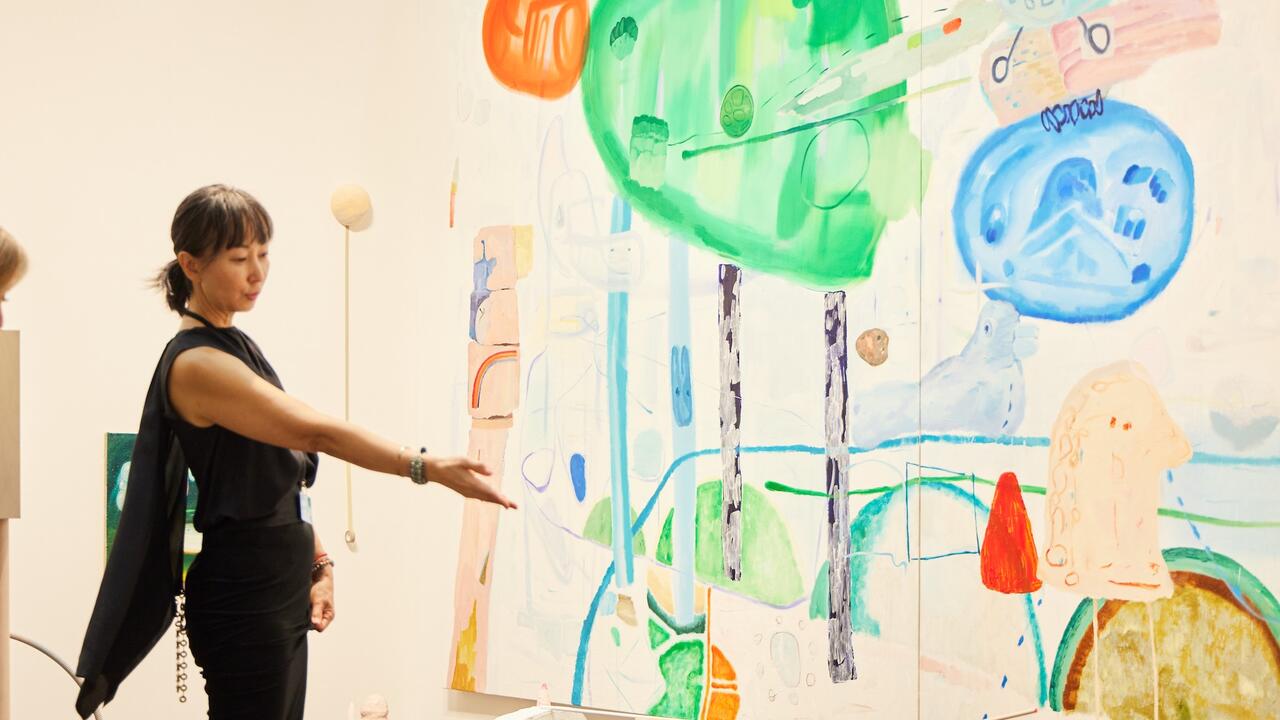Kerstin Cmelka
Künstlerhaus Halle für Kunst & Medien (KM–)
Künstlerhaus Halle für Kunst & Medien (KM–)

Kunst und Lebensform (Art and Life Form), Kerstin Cmelka’s solo show in Graz, opened with a performance. For Change (2011/3), the artist cast four of her artist friends to restage scenes from a 1969 play of the same name by Graz dramatist Wolfgang Bauer. The work depicts a vicious power struggle between an artist, an art critic and a young painter named Blasi Okopenko. Out of boredom, the artist and critic mindlessly build up Okopenko’s career only to let it fall apart in the end. In Bauer’s original, the drama ends with the young artist’s suicide. In Cmelka’s version, the final scene shows her protagonists breaking into a wild dance and swapping their clothes at the command ‘let’s change!’ – and with their clothes, their identities as well.
A pink curtain hung at one end of the main exhibition space, where Male (2012) – a series of photographs showing scantily clad men – and the props and costumes from the performance, were also on display. These furnishings served as a prelude to the main exhibition proper – on display in the Künstlerhaus basement – and illustrated the performative nature of Cmelka’s work.
In the basement, the video works Art and Life (2012) and The Individualists (2012) played on multiple projections distributed throughout the space in an open installation. (An enormous hand shaped cushion sculpture Sofaskulptur [Sofa Sculpture, 2013] in the middle of the room the only other work in the space.) Both films consisted of short sequences – reenactments of material culled from film, television, and YouTube – again performed by Cmelka’s artist friends.
Art and Life showed three conversations exploring relationship problems between heterosexual couples. In the first, a text transcribed from Valie Export’s Unsichtbare Gegner (Invisible Adversary, 1977) served as the script for a couple’s conversation on a car journey. The couple begin to squabble over something trivial, only to end up posing fundamental questions about the sensibility of romantic relationships in general. The second recreates Nina Hagen’s controversial appearance on the ORF show Club 2 in 1979, in which she matter-of-factly demonstrated how to masturbate. The final conversation shows Cmelka herself playing the role of an artist seemingly in a therapy session (the text drawn from an interview in 1978 conducted by film critic Peter W. Jansen with Rainer Werner Fassbinder.)
The Individualists used actors to tell a different story on the three remaining screens. Three important figures from film, radio and art are interviewed, pronouncing banalities whose absurdity was highlighted by the seriousness of their delivery. The American life coach Dr. Laura Schlessinger related her desire to save humanity from spiritual injury, Steven Spielberg tells Bianca Jagger about his early years as a ‘techie’, and a young Jeff Koons philosophizes on ambiguous place names and German proverbs in the show 52 Bond Street, produced by David Byrne out of his New York apartment in the 1970s. When Schlessinger describes breaches of confidence as ‘shark attacks (on land)’ in a bout of comedic melodrama, it’s clear that Cmelka here turns to reenactments to draw out and ironize the absurdity of the original.
The insistent restaging of found material lent the analysis of relationships, dependencies and power structures a markedly indirect and distanced quality. In the end, one couldn’t be sure if the exhibition’s critique should be taken seriously at all. But, while ordinariness may have come across as artificial in the dialogues, the casting of friends lent the show intimacy and realism. Art and life folded into one another until they were all but indistinguishable.
Translated by Jesse Coburn
















